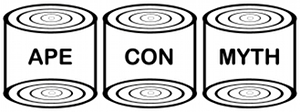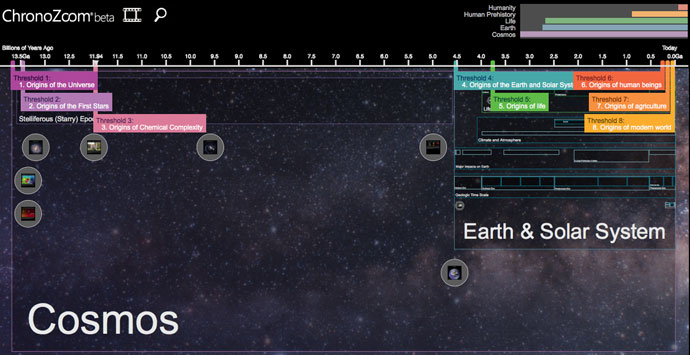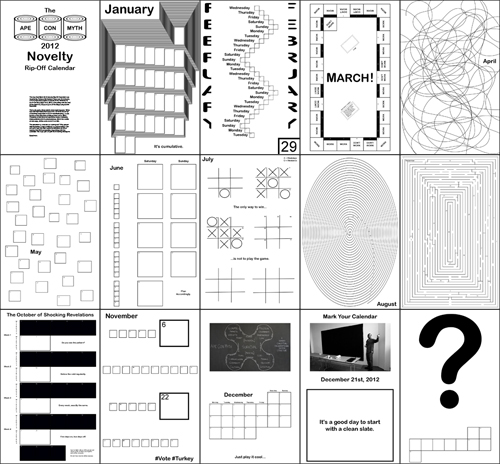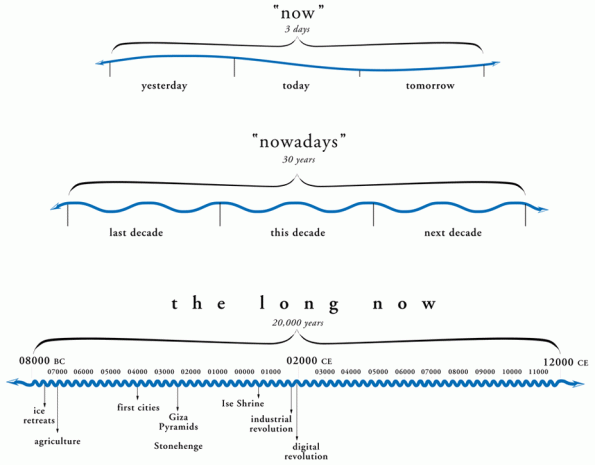The next time you wake from a long nap in a strange place and are told it is thousands of years earlier or later than you’d expect, it will most likely, and most unfortunately, not be thanks to time travel. That is, unless you’re flexible enough to qualify the use of a different calendar as such, in which case, go wild…
[Chart from the 2012 Wikipedia entry]If Everyone on Earth Worked 9 to 5…
…and slept from 11 to 7, 98% of the planet would be awake between 5-6am PST and 75% would be asleep between 2-3pm in the afternoon…
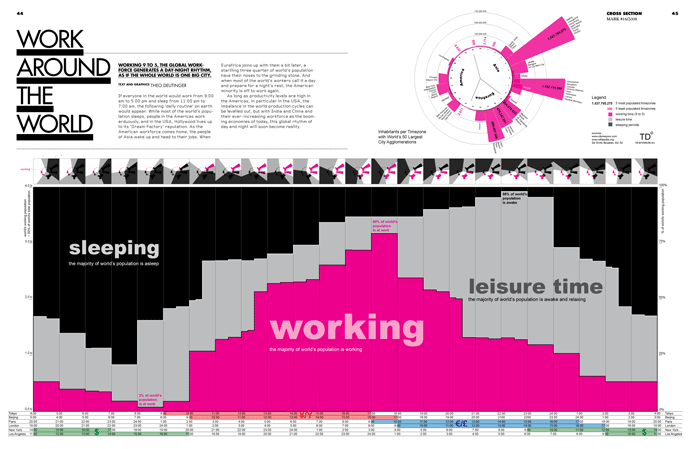 (click image for full-size version)
(click image for full-size version)
On Not Taking Every Minute of the Day for Granted
24 hours, 70 workers, 1,440 minutes and 1,611 digit changes, all filmed in real time.
The entire 24 hour performance of Standard Time is available for purchase to run as a clock on your computer, iPhone or iPad.
Will they really make every change in time? There’s only one way to find out.
[Artwork by Mark Formanek realized by Datenstrudel at Skulpturenpark Berlin_Zentrum]From Big Bangs Come Big Histories
Between the beginning of our universe and the present moment lies 13.5 billions years and so much data that the Information Age hasn’t even put a dent into it yet. Not only did Earth not come together, literally, until 9 billion years after the party started, we, relatively speaking, just showed up a few moments ago. That’s a lot of inside jokes we’ve missed out on, not to mention all the other universes or unknown entities potentially beyond our present understanding.
Despite the disadvantage, the field of Big History was born in the 1980’s with the simple goal of studying history from the beginning of time to the present across multiple disciplines of knowledge. How’s it going so far? Judge for yourself by checking out ChronoZoom, a collaboration between Microsoft Research, UC Berkeley and Moscow State University.
While visually impressive, you might still wonder where you are going to find the time to dive into such a study or why you should even care given that you haven’t filed your taxes yet, but perhaps Bill Gates will one day save up enough money to give us all a couple of days off for such a purpose. Until then, more information can be found at the Big History Project and from David Christian’s TED talk on the subject.
[via Flowing Data] [Related Posts: Carl Sagan’s Cosmic Calendar, Get Your Perspective On]The Ape Con Myth 2012 Novelty Rip-Off Calendar
Will the world end in 2012? You wish.
The Ape Con Myth 2012 Calendar is not a doomsday calendar, but one specifically designed to get you through what by all appearances could be a pretty interesting year.
Buy one today and enjoy a year of people asking you what that is on your wall!
And to get you in the mood, here’s something to take up more of your time via BoingBoing…
Ten Things Everyone Should Know About Time
A Brief History of the Apocalypse
The latter, a timeline of past, present and future predictions of Earth’s doom, starts things off on a familiar note:
“According to Isaac Asimov’s Book of Facts (1979), an Assyrian clay tablet dating to approximately 2800 BC was unearthed bearing the words “Our earth is degenerate in these latter days. There are signs that the world is speedily coming to an end. Bribery and corruption are common.” This is one of the earliest examples of the perception of moral decay in society being interpreted as a sign of the imminent end.”
Alas, it was just another Thursday. And so it goes?
Next year, break the monotony with The Ape Con Myth 2012 Novelty Rip-Off Calendar!
Also available at Electric Works.
Carl Sagan’s Cosmic Calendar
The Long Now Foundation
“The Long Now Foundation hopes to provide counterpoint to today’s “faster/cheaper” mind set and promote “slower/better” thinking. We hope to creatively foster responsibility in the framework of the next 10,000 years.”
(image from Long Now – click to enlarge)
Learn more at LongNow.org
